Summer will be here soon as will be the time for summer tyres. Although it is legal to drive with winter tyres during summer, this is not recommended. Seasonal tyres have a positive impact on wear, driving quality and fuel consumption. The question is: how to store winter tyres in a way that they are fit for use in the next winter season.
The consequences of faulty storage
 Tyres are composite material structures, consisting of steel wire mesh, the so-called carcass, surrounded by a rubber coating. The reinforcement of the rubber coating is called “vulcanisation“.
Tyres are composite material structures, consisting of steel wire mesh, the so-called carcass, surrounded by a rubber coating. The reinforcement of the rubber coating is called “vulcanisation“.
The rubber is strongly heated until it is sufficiently liquid to create an air-tight mantle around the carcass. This is very important. The carcass is stable and solid as long as it is protected against corrosion. Once, air and moist penetrate the steel wire, the tyre will soon be finished.
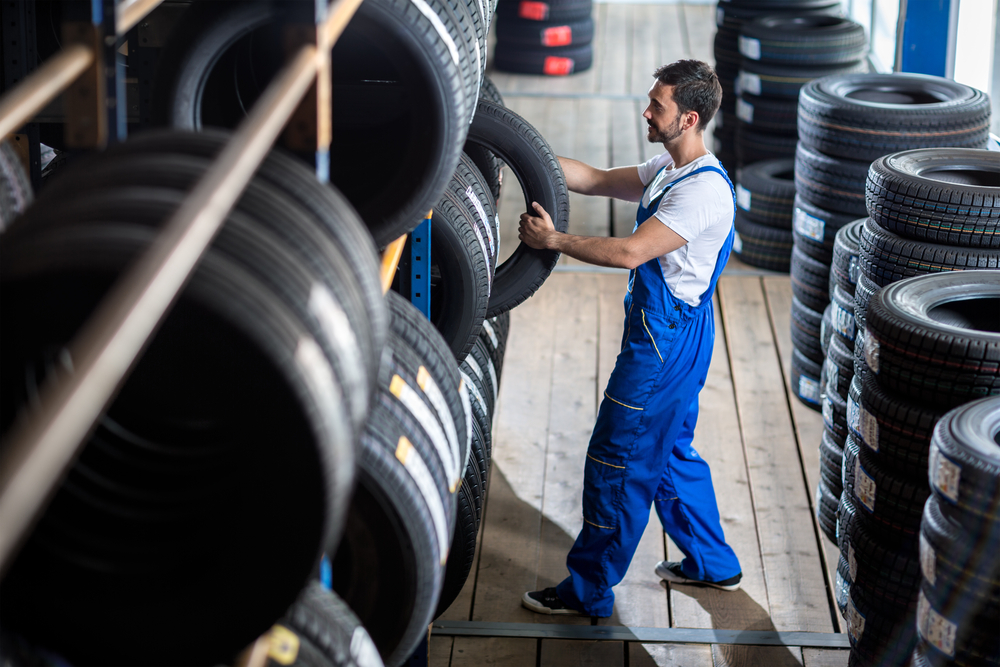 This is the heart of the problem of faulty storage. The tyres need to be stored in such a way that they have no pressure point. Standing vertically on their tread for months without being occasionally turned will cause the carcasses to gradually bend at one point, which is likely to damage them.
This is the heart of the problem of faulty storage. The tyres need to be stored in such a way that they have no pressure point. Standing vertically on their tread for months without being occasionally turned will cause the carcasses to gradually bend at one point, which is likely to damage them.
At the stress point, micro-fractures can develop which could widen during driving ultimately causing air to reach the carcasses. Especially for winter tyres, this is totally fatal. Salt and snow boost the corrosion process in the carcass.
The following errors are typical in tyre storage:
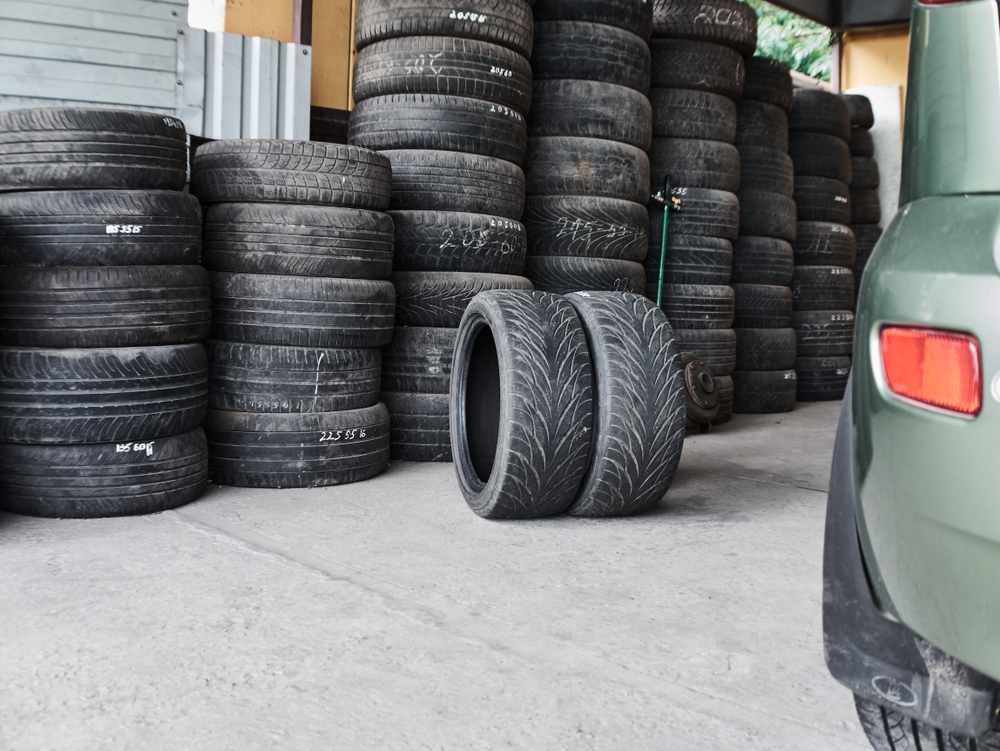
| – standing storage. – storage area too bright. – storage area too damp. – chemical substances in the proximity. |
Correct storage with a flick of the wrist
Therefore, a car tyre should be stored
– lying flat or hanging
– in the dark
– dry
– adequately ventilated
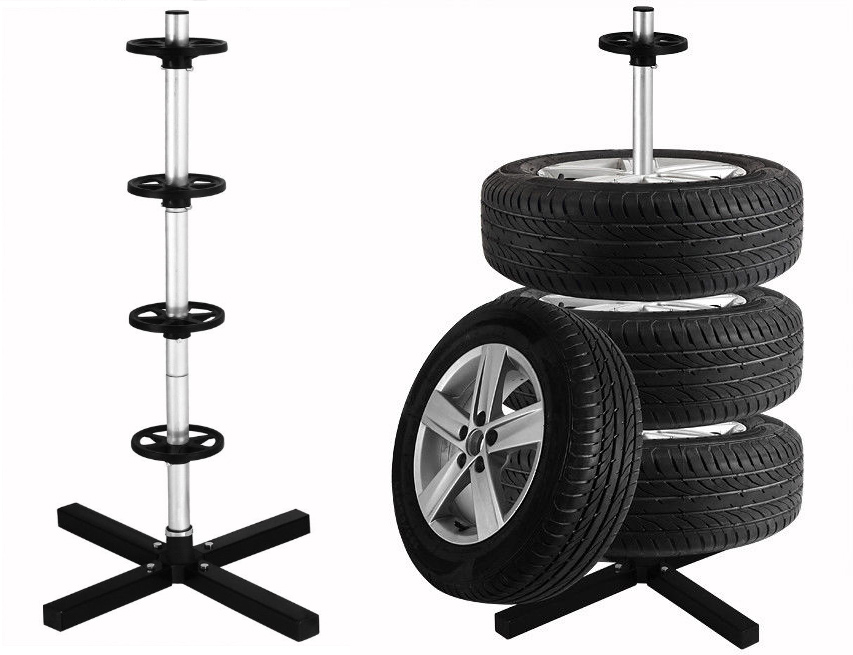 It is basically possible to stack the car tyres on top of each other. However, no more than four tyres should be stacked on top of each other. The pressure is well distributed over the entire lateral surface when stored horizontally. Still, this is where the weakest spot is. An overheight tyre tower would, therefore, cause lasting damage to the tyres on its lowest levels.
It is basically possible to stack the car tyres on top of each other. However, no more than four tyres should be stacked on top of each other. The pressure is well distributed over the entire lateral surface when stored horizontally. Still, this is where the weakest spot is. An overheight tyre tower would, therefore, cause lasting damage to the tyres on its lowest levels.
Optimal solutions are the tyre tree or a suitable wall peg. With these solutions, the tree hangs totally stress-free and damage through standing is avoided.
 Darkness is very important for tyres. The merciless UV radiation from the sun ages and embrittles the rubber. Especially when the same spot is constantly lit, gradual damage is practically unavoidable.
Darkness is very important for tyres. The merciless UV radiation from the sun ages and embrittles the rubber. Especially when the same spot is constantly lit, gradual damage is practically unavoidable.
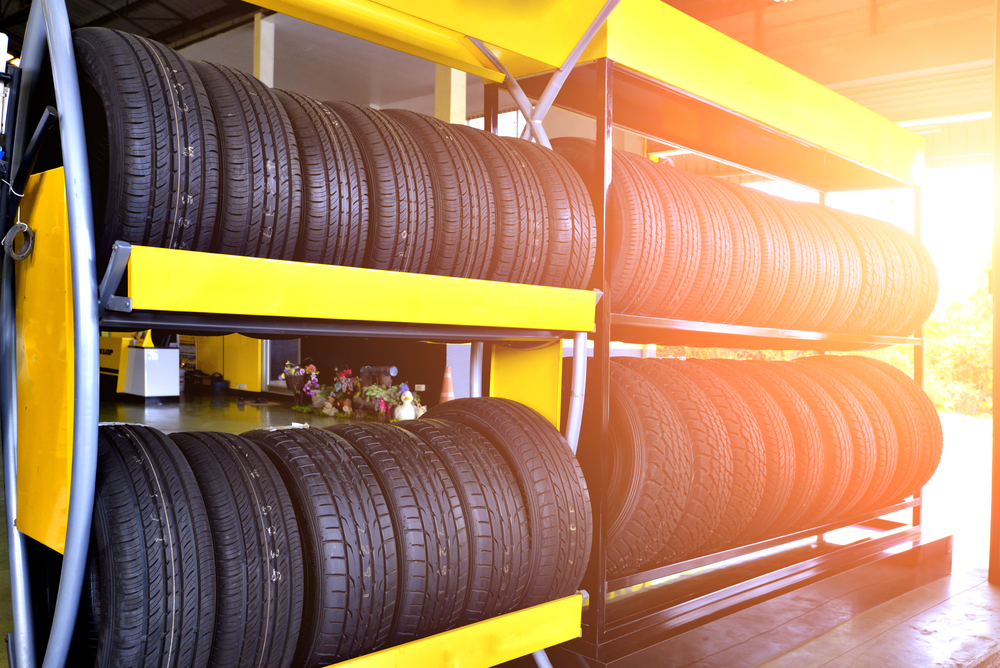 Moisture is also very dangerous for tyres. Water can penetrate the outer layer and settle in the rubber. This causes the rubber to dissolve and is harmful to the carcass. Pallets are ideal for stacking them as they maintain sufficient distance from the ground, protecting them against water accidentally flowing into the storage space.
Moisture is also very dangerous for tyres. Water can penetrate the outer layer and settle in the rubber. This causes the rubber to dissolve and is harmful to the carcass. Pallets are ideal for stacking them as they maintain sufficient distance from the ground, protecting them against water accidentally flowing into the storage space.
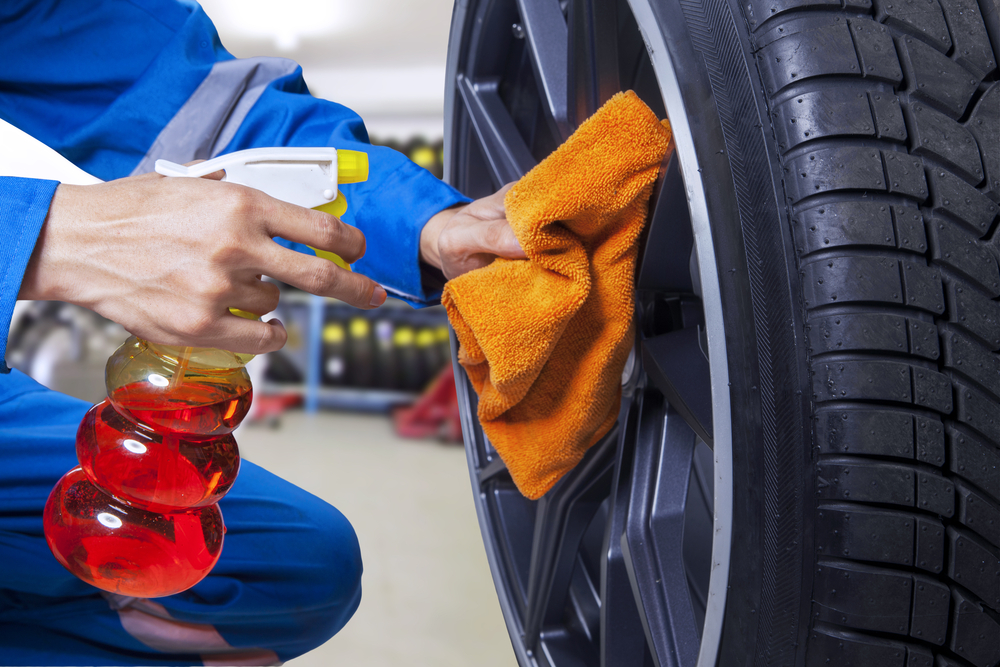 Particularly harmful are chemicals containing solvents, such as conventional fuels like petrol or diesel. But also engine oil, brake cleaner, WD-40 and even detergent and glass cleaner can damage the tyre rubber. The wheels must be shielded from them. Adequate ventilation of the storage space also prevents solvent fumes to settle on the tyres.
Particularly harmful are chemicals containing solvents, such as conventional fuels like petrol or diesel. But also engine oil, brake cleaner, WD-40 and even detergent and glass cleaner can damage the tyre rubber. The wheels must be shielded from them. Adequate ventilation of the storage space also prevents solvent fumes to settle on the tyres.
Tyre storage – step by step
There are six steps to stick to when storing tyres:

| 1. Checking. 2. Cleaning. 3. Marking. 4. Choosing storage space. 5. Setting up the storage space. 6. Storing the tyres |
It’s no use storing tyres which cannot be used in the new season. Prior to storing used them, they should be thoroughly checked.
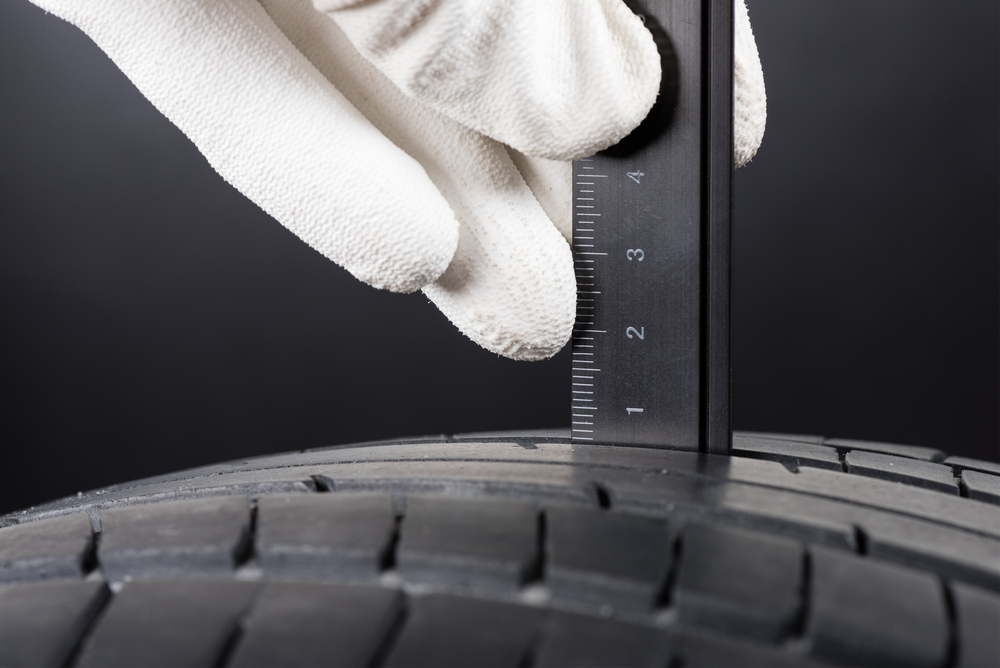 First of all the profile depth must be sufficient, which can be measured with a tyre profile depth gauge. On summer tyres, 1,6 mm is enough, winter tyres need to have a 4 mm profile depth to guarantee the necessary safety.
First of all the profile depth must be sufficient, which can be measured with a tyre profile depth gauge. On summer tyres, 1,6 mm is enough, winter tyres need to have a 4 mm profile depth to guarantee the necessary safety.
This doesn’t mean that winter tyres with the minimum profile depth should automatically be stored. We remind you that this is the depth with which they will be mounted and driven the next winter. Therefore, winter tyres with a profile depth of 6 mm or less should no longer be used, but replaced.
When checking the profile depth, be sure to check the overall condition of the tyres. Abrasion points, skid marks, cracks, bumps are all exclusive criteria for further use. In this case, the tyre needs replacement. Ultimately, the tyre’s life span is limited. The maximum life span of car tyres is 10 years. Beyond that, they are no longer safe for traffic. The tyre age can be checked by the DOT code, a 4-digit number on the edge in an oval-shaped field. The four digits indicate the week and year of production. 3214 signifies “calendar week 32 in the year 2014.
Ultimately, the tyre’s life span is limited. The maximum life span of car tyres is 10 years. Beyond that, they are no longer safe for traffic. The tyre age can be checked by the DOT code, a 4-digit number on the edge in an oval-shaped field. The four digits indicate the week and year of production. 3214 signifies “calendar week 32 in the year 2014.
After six years a tyre should be thoroughly checked prior to storage. The eye of a professional comes in useful, here.
A clean tyre is a safe tyre. Prior to storage, it is preferably rinsed with a high-pressure cleaner, removing dirt from the profile. This is particularly important for winter tyres as the dirt is likely to contain a considerable amount of road salt. This should all be washed away to prevent the tyres from sustaining damage during storage.
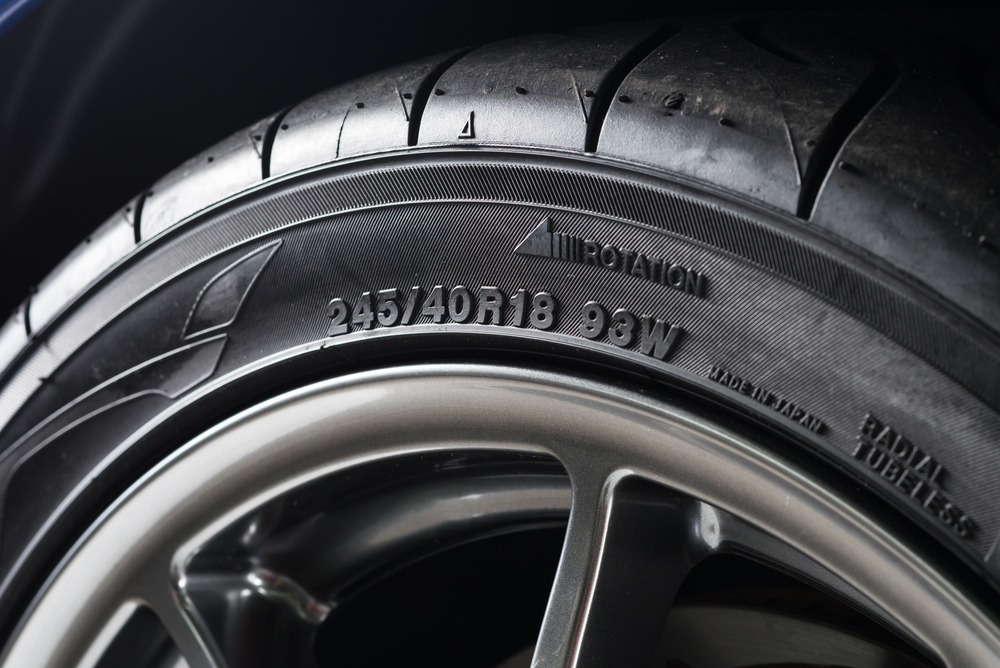
They are marked as follows:
FL = Front Left
FR = Front Right
RL = Rear Left
RR = Rear Right
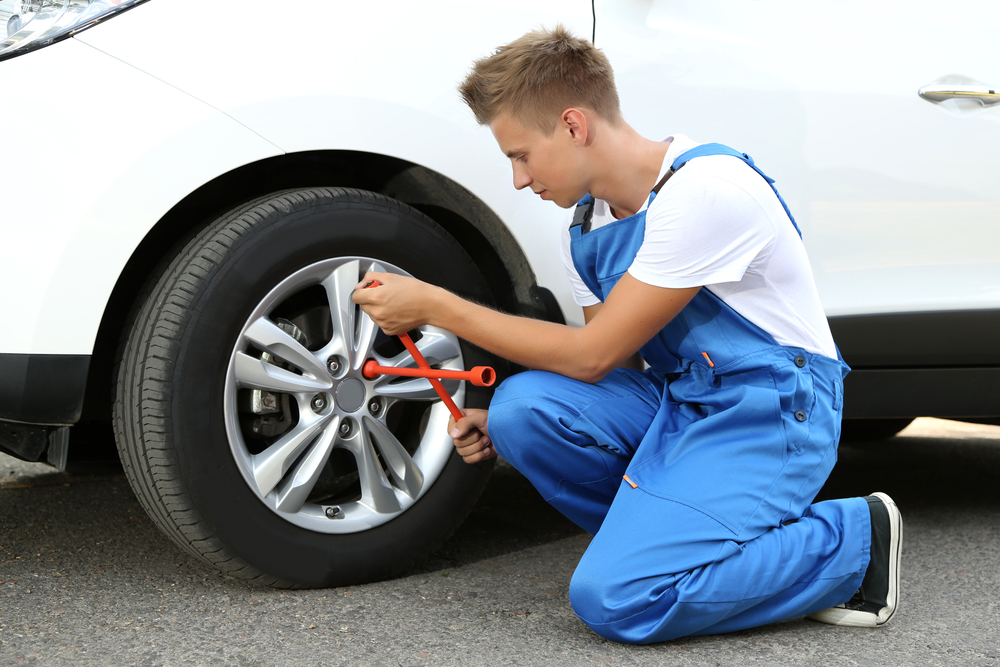 It doesn’t matter on which side of the axle they are mounted. This merely simplifies the allocation. It is indeed a sensible precaution to replace the tyres yearly axle-wise in order to evenly spread the wear.
It doesn’t matter on which side of the axle they are mounted. This merely simplifies the allocation. It is indeed a sensible precaution to replace the tyres yearly axle-wise in order to evenly spread the wear.
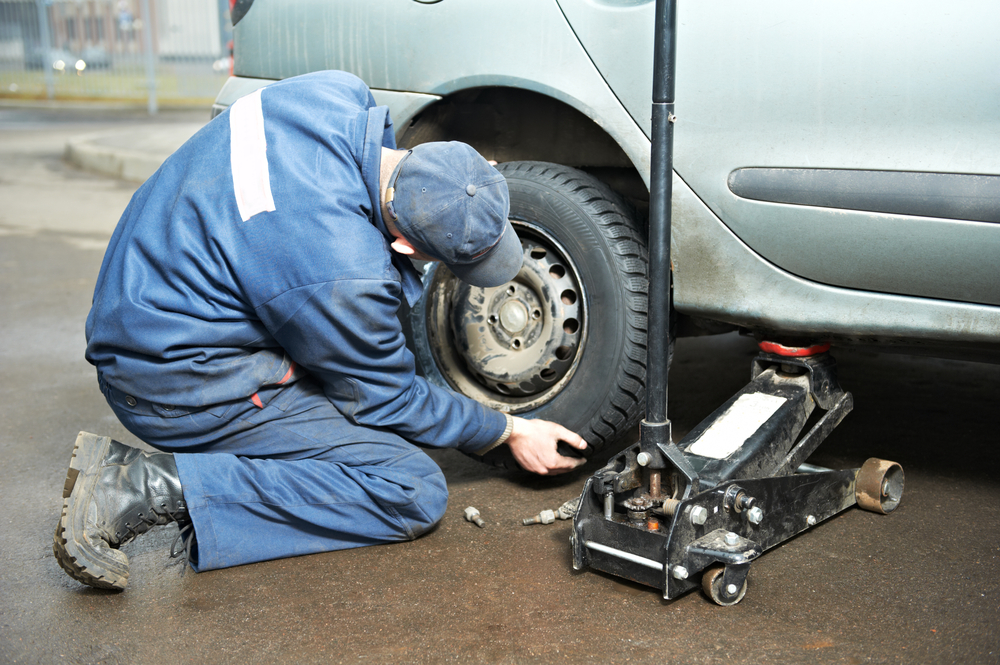 Generally, the front tyres wear quicker. The engine causes more strain there. Furthermore, steering movements add to tyre wear. The best measure is the yearly replacement of both front and back ones simultaneously.
Generally, the front tyres wear quicker. The engine causes more strain there. Furthermore, steering movements add to tyre wear. The best measure is the yearly replacement of both front and back ones simultaneously.
Take care to mount the tyre in the rotational direction. Installing a tyre in the wrong direction will cause it to permanently roll backwards, which will impair the driving quality and increase wear. If this is noticed on occasion of a check, you run the risk of a fine.
Ultimately, a clean, dark, dry and adequately ventilated storage place is chosen. The euro pallet is the minimal protection against lingering moisture. The ideal is the tyre tree. Wall storage is specifically space-saving. However, it requires drilling in the garage wall. Be certain to settle this with the garage owner first.
Foto: Standret, SantiPhotoSS, Lucky Business, AllaBond, Collin Quinn Lomax, Phonix_a Pk.sarote, Creativa Images, Syda Productions, Bhakpong, Dmitry Kalinovsky, Nor Gal / shutterstock.com

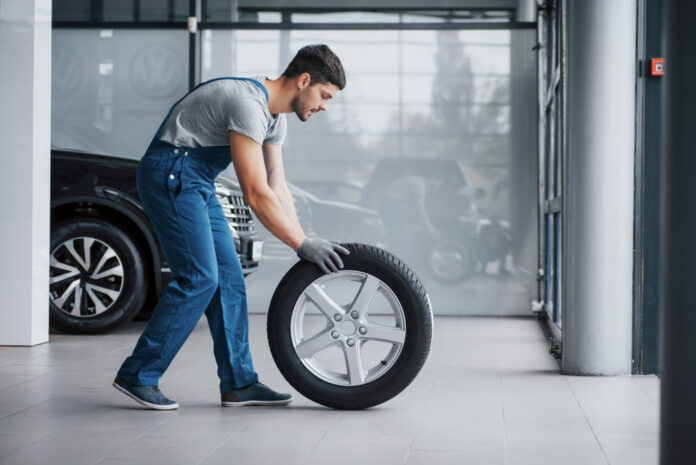

 (12 votes, average: 4.00 out of 5)
(12 votes, average: 4.00 out of 5)







